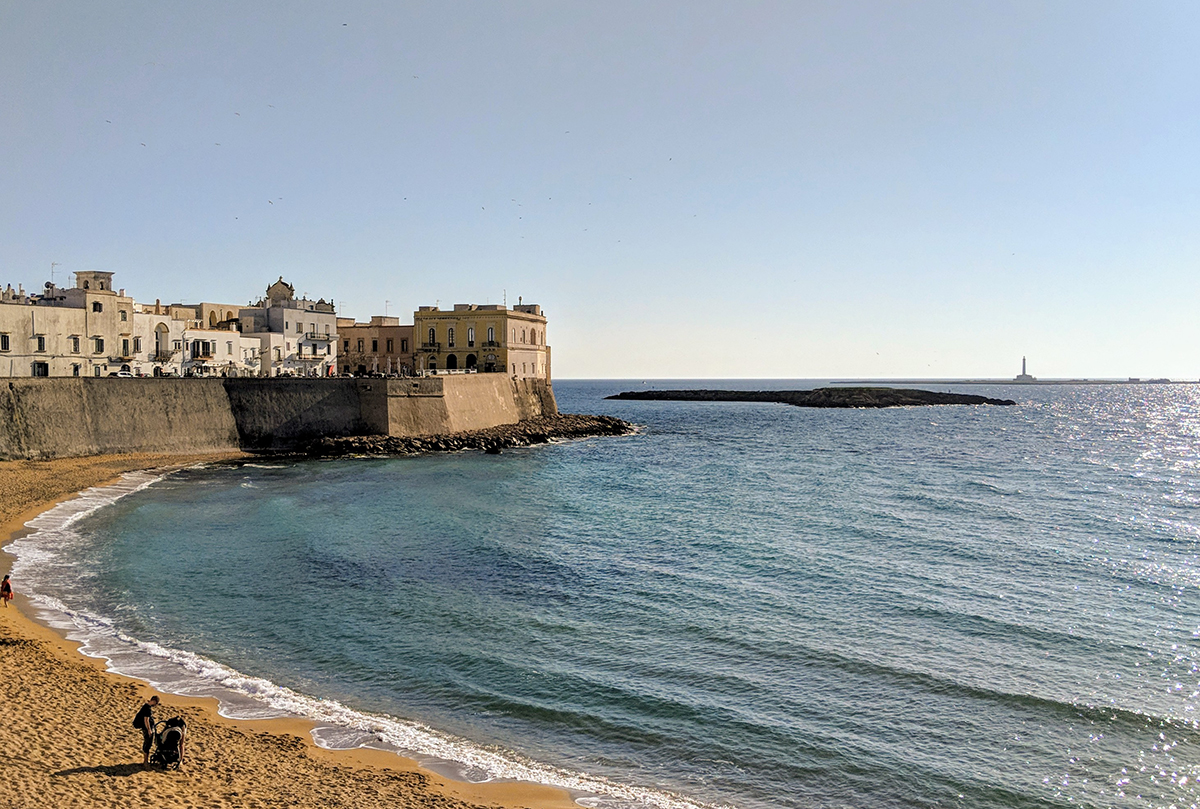territory
Ostuni
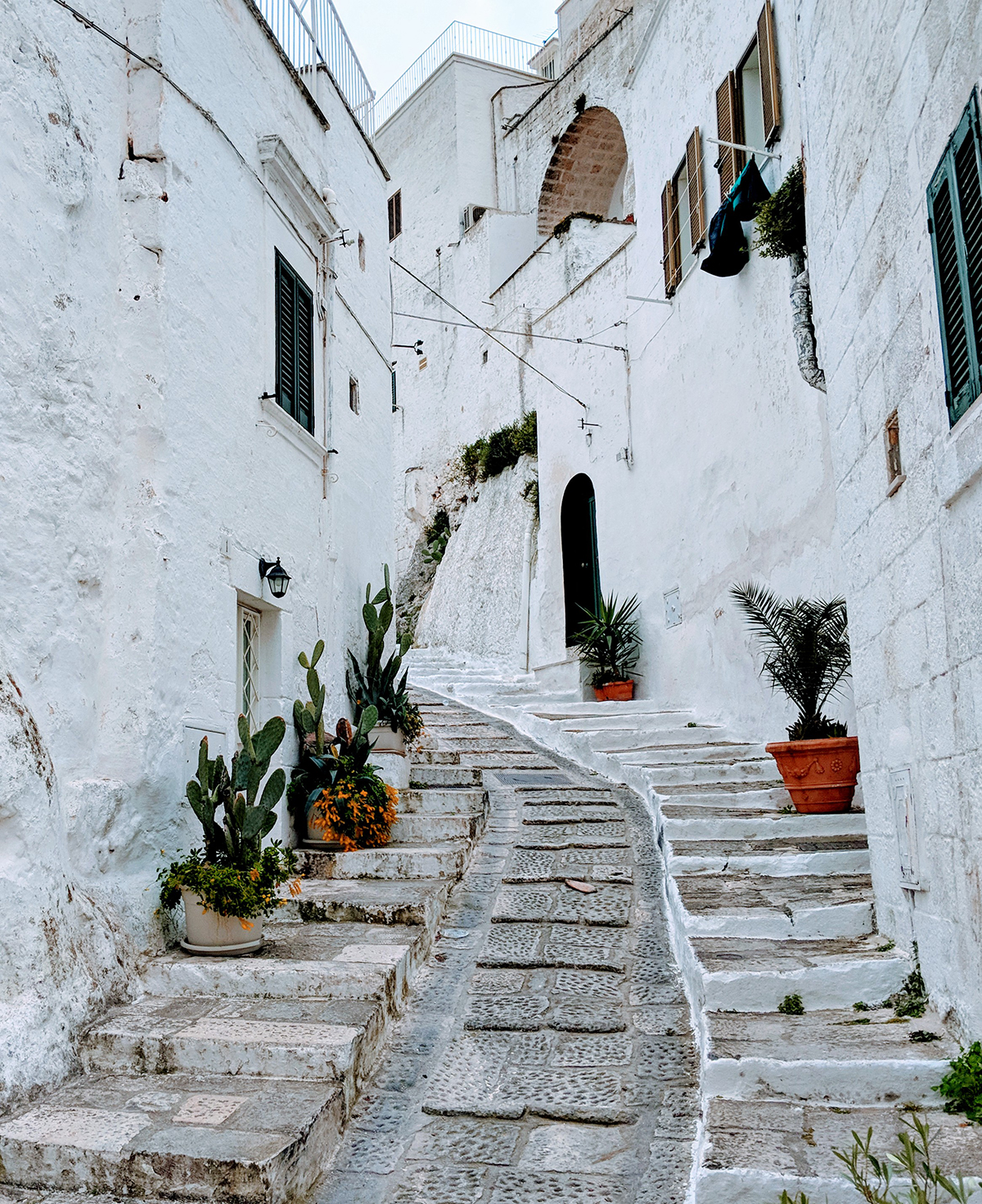
When approaching by the sea Ostuni appears to the visitor as a white mirage over a green sea of centuries-old olive trees, with its stacks of little white houses dominated by the silhouette of the cathedral that caps the old city. The historic center of Ostuni is the apotheoses of the architectural and urbanist style of this part of Puglia: narrow and picturesque alleys, vertiginous staircases, whitewashed walls and, once at the very top, a breathtaking panorama of a green ocean of olive trees descending right to the blue of the Adriatic Sea. At the top of the city is the 15th-century Romanesque-Gothic cathedral, its façade adorned with a large rosette of rare beauty.
In the Museum of the Preclassical Civilizations of the Southern Murge, just steps from the cathedral, the form of Delia, a pregnant woman who lived here 25,000 years ago, is on display. Churches and noble residences are lined up one after the other in the old town, surrounded by Aragonese walls, in which occasional narrow doors such as Porta Nova or Porta San Demetrio can be seen.
The farmland around Ostuni features some of the most beautiful farms of the region, witnesses to a strong peasant culture that has crossed the centuries, just like its centenary olive trees, which are among the oldest in Puglia. Carbon-14 dating shows some of them to be 3000 years old. In the old town there are all variety of places, excellent restaurants and entertaining pubs that cater to every potential need.
Lecce
Lecce is the baroque capital of Apulia, a city of art for centuries nicknamed the “Florence of the South.” Only 12 km from the Adriatic Sea, Lecce is also the capital of Salento. The historic center, which is also the city’s vital center, is home to Roman theatres, luxuriant portals and squares, such as the spectacular Piazza Duomo, a vast space topped by wonderful examples of Lecce’s baroque style. The monuments, the noble facades as well as the more modest buildings, all boast the warm golden honey color of the Lecce Stone. The highlight of the sophistication and the most spectacular example of the baroque style of Lecce is the façade of the Basilica of Santa Croce and the magnificent palace of the seminary.
The imposing castle of Charles V and its museum form a kind of demarcation line between the historic center and the modern city. In addition, many shops and boutiques are available for shopping or just for strolling through the warm, typical Salerno light.

Polignano a mare

Polignano fascinates because it’s perched over the sea. It seems to dwell in the sea with the old town rising high on its cliffs, which are beaten by the waves of a crystalline blue sea. It’s the perfect place to immerse yourself in a pristine seabed or take boat trips to enjoy an incredible panorama of caves and cliffs. On land you enter the city through a narrow door, and then the labyrinth of white alleyways leads to the13th century Chiesa-Matrice, which is dedicated to the assumption of the Virgin Mary, or to the museum of the foundation “Pino Pascali,” established in the old slaughterhouse and dedicated to the work of the great sculptor and artist of Puglia.
Valley of ITRIA
The Valle d’Itria appears as an enchanted valley, with the cones of the Trulli scattered here and there. In the heart of this valley are three charming places, different from each other but at the same time similar as far as the typical characteristics of the historical centers of this part of Puglia: the white walls, the labyrinth of fresh and cheerful alleys and the squares where the social life of these villages has always been held. These are Martina Franca, Locorotondo et Cisternino.

Martina Franca
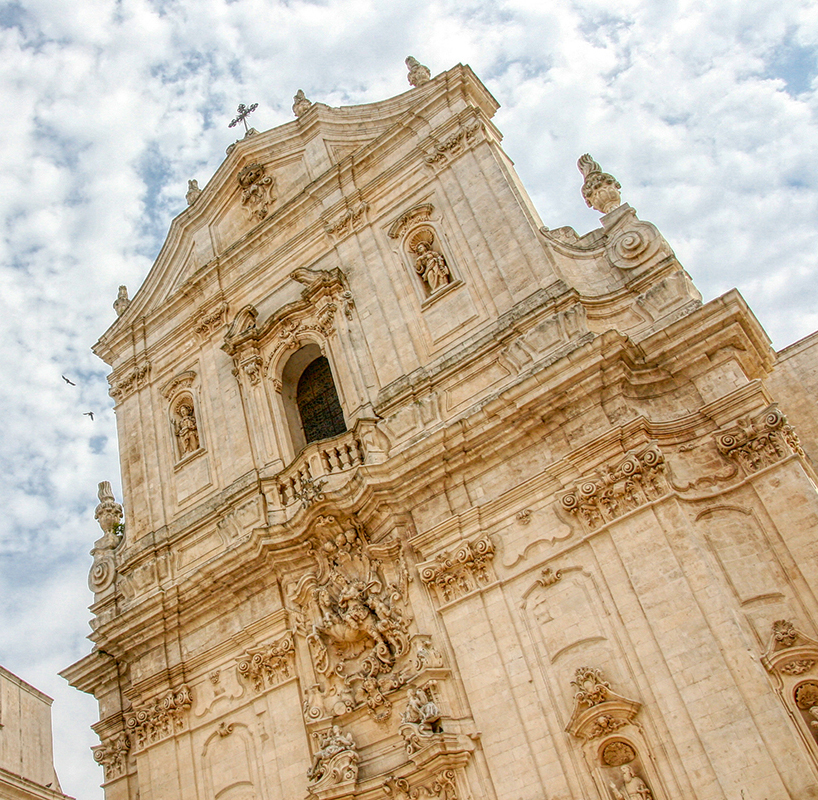
Martina Franca owes its name to the worship of Saint Maarten, who had helped the inhabitants in their struggle against enemy invasions, and also to the fact that it was a free city at the time of Philip of Anjou. The city, well populated, full of beautiful shops and good restaurants, is a destination not to be missed for those who appreciate the art and culture of this part of Puglia.
The historic center is characterized by an infinite number of white houses nesting on each other vertically and overlooking enchanting narrow streets. But Martina Franca is best known for its Baroque wealth and opulence, found in the Ducal Palace and palaces such as Palazzo Martucci, Palazzo Dell’università, Palazzo Motolese, Palazzo Maggi and Palazzo Ancona. The sumptuous Basilica of Saint Maarten, in the heart of the old town, with the beautiful Piazza Maria Immacolata is within walking distance. The culinary tradition makes it an undisputed destination for lovers of meat cooked in the traditional wood oven and for those who like the traditional Apulian cuisine.
Locorotondo
Locorotondo rises above the plateau of the Murge of Trulli with a beautiful circular historical center that overlooks the Valley of Itria with its white houses with their characteristic “cumerse” roofs, conical roofs made of stone.
Considered one of the most beautiful villages of Italy, its clean and orderly historic center preserves treasures of gastronomy—here, each restaurant offers its guests the best of the culinary tradition of Puglia. It could be nice to get lost in the maze of alleys that open up here and there with views of the green valley below. Churches and portals, flowery balconies and kitchen smells excite tourists who wander through these alleys. The Church of the Addolorata is a must-see, as are the Holy Spirit, Saint Nicholas, Saint Rocco and the Madonna of the Chain. Inside the Church of Santa Maria Della Greca is a polyptych of the Renaissance named To The Madonna Of The Roses and a sculptural group of Saint George on horseback. Locorotondo produces an excellent white wine DOC. A destination not to be missed
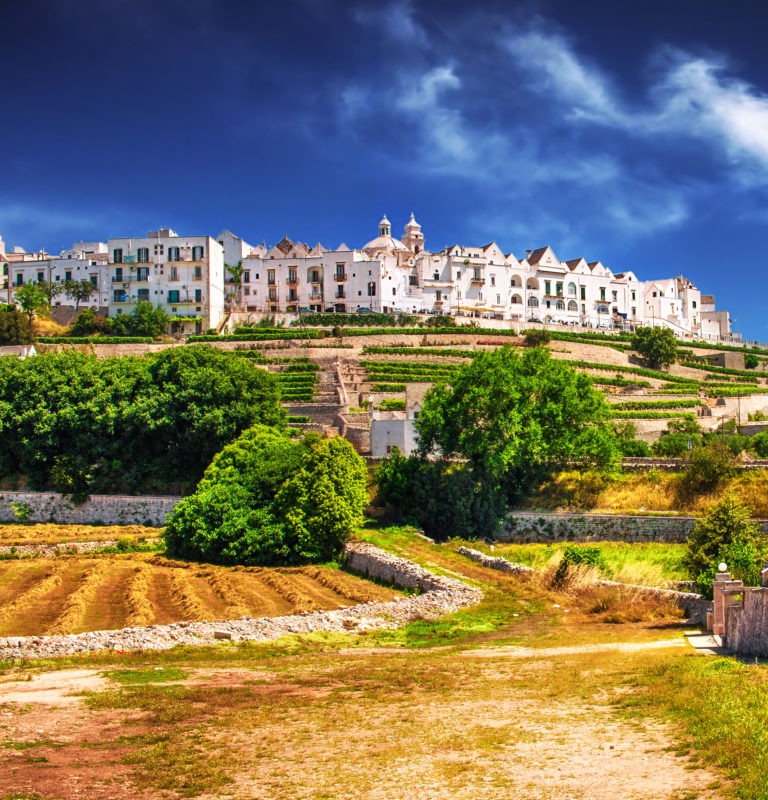
Cisternino
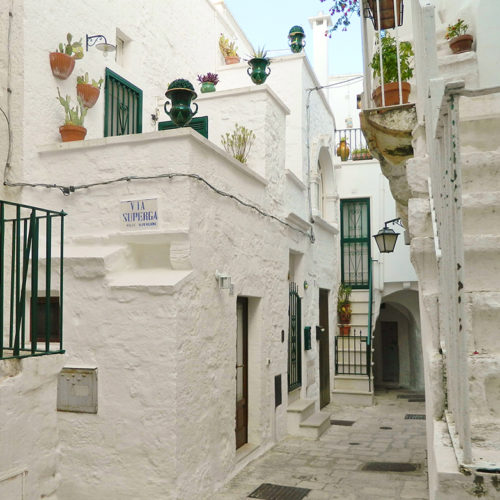
A charming old town surrounded by walls now incorporated into the urban fabric. The village has remained almost intact over the centuries, since the middle ages. The Porta Grande was the gateway to the ancient heart of Cisternino. Its small streets with polished “chianche” (paving), lead to the thrilling centre, where the bars and restaurants make Cisternino a destination to explore. The clock tower and its surrounding neighborhoods of “Bère Vécchy”, “Scheledd”, “U Pantene”, “the Ìsule” and “U Bùrie” are the jewels of this small labyrinth of streets and squares where whitewashed houses line up, with steps embellished by geraniums, lodges and arches.
Gallipoli
